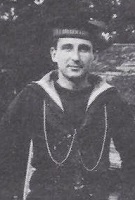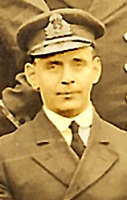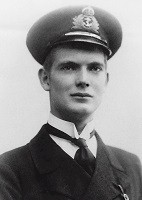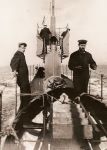|
HMCS CC1
C - Class Submarine
CC1 and CC2, originally named Iquique and Antofagasta, respectively, were built at Seattle for the Chilean government. However, the deal with the Chileans fell through, and on the eve of the First World War these submarines were purchased by the premier of British Columbia, Sir Richard McBride. The Dominion government ratified the purchase and on 06 Aug 1914 the two boats were commissioned as CC1 and CC2 because of their resemblance to the British "C" class submarines. After three years' cruising and training on the west coast they were ordered to Europe, and on 21 Jun 1917, set out for Halifax with their mother ship Shearwater. On 03 Jul 1917 they arrived in Seattle and were invited, along with the crews of CC2 and Shearwater, to lead the Seattle Independence day Parade on 04 Jul 1917. They were the first warships ever to transit the Panama Canal under the White Ensign. Unfit for a transatlantic crossing, they remained at Halifax until sold for scrap in 1920.
Photos and Documents Crew photos
Commanding Officers
LCdr Adrian St. Vincent Keyes, RN - 04 Aug 1914 - unk
Lt Francis Beaversham Hanson, RN - 21 Jun 1917 - unk
They shall not be forgotten
Photos and Documents
( CC1-001) CC1 and CC2, Port San Juan, BC // RCN Photo # E-41070 // Courtesy of the Comox RCAF Museum
(CC1-002) HMCS CC1 entering San Diego Harbor, 1917, during the cruise from Esquimalt to Halifax // Photo by J.A. Bruce courtesy of the Dave Perkins Collection, Directorate of History and Heritage, Ottawa // Courtesy of the CFB Esquimalt Naval and Military Museum (CC1-003) Cox'n James Addison on right and the three other sailors aboard the submarine CC1 - date unknown // Courtesy of the CFB Esquimalt Naval and Military Museum (CC1-004) HMCS CC1 in the slips at Esquimalt, B.C. (CC1-005) CC1 and CC2 at Imperial Oil's Loco Refinery, Burrard Inlet, BC // Source: Port Moody Museum // Courtesy of Dave Shirlaw (CC1-006) CC1 and CC2, Location unknown, possibly Esquimalt, BC // Source: Port Moody Museum // Courtesy of Dave Shirlaw
|















